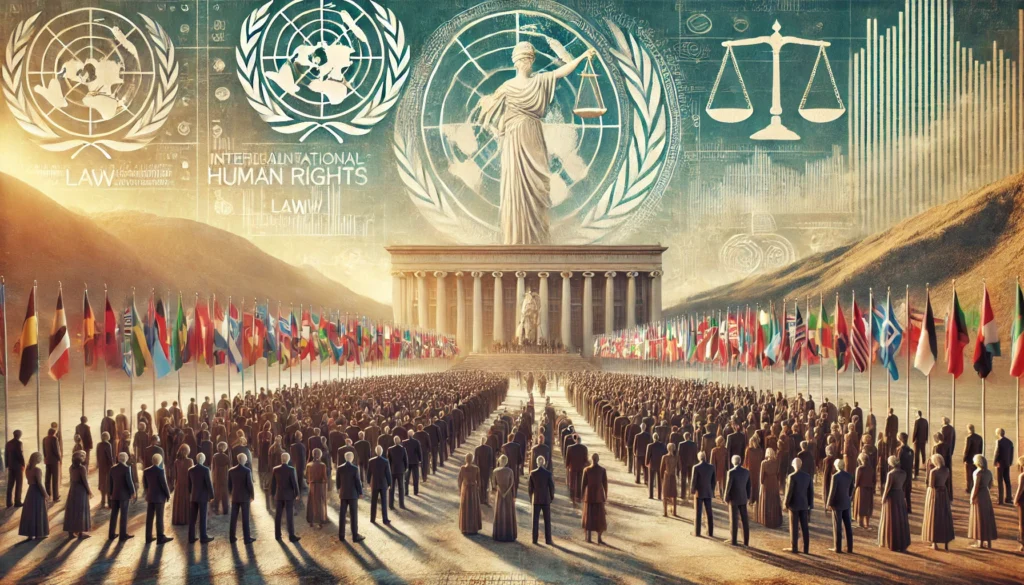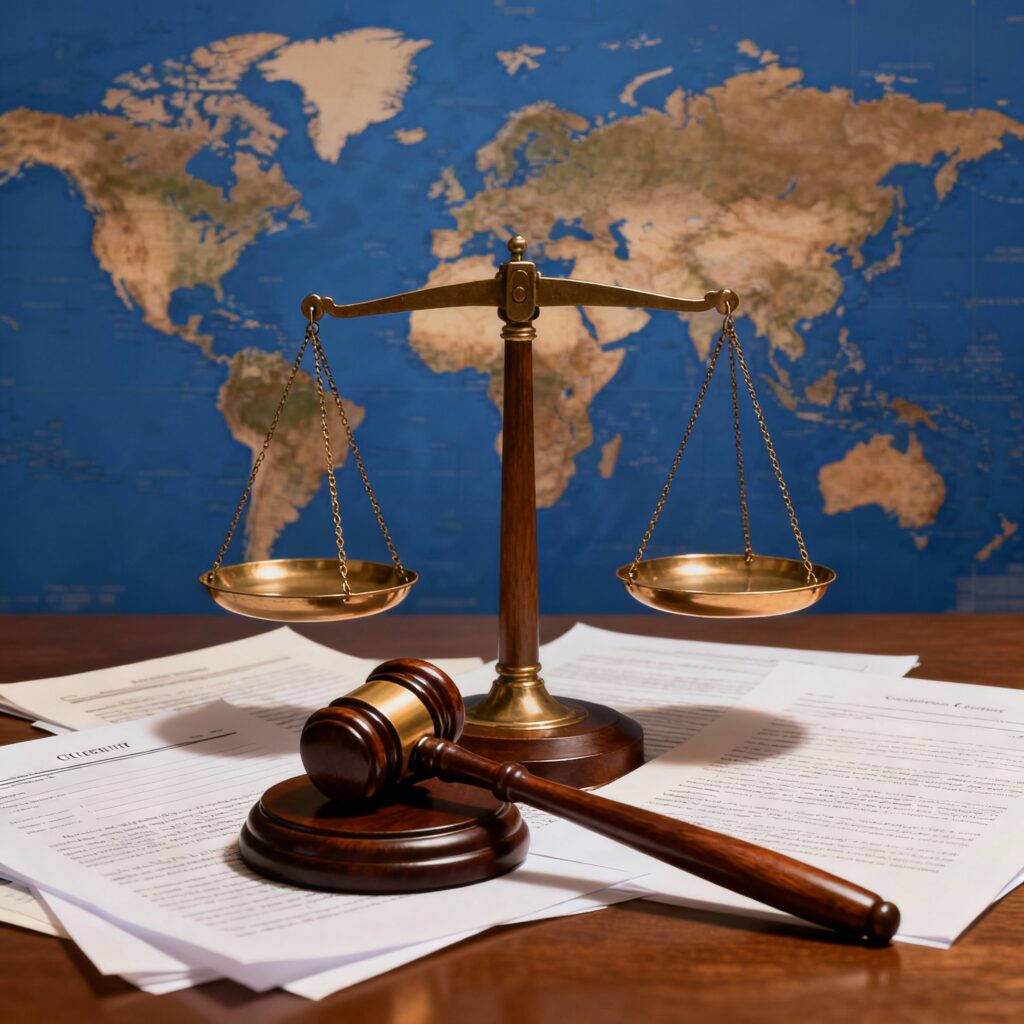Published on 05th August 2025
Authored By: Sneha Raj
Chanakya National Law University
INTRODUCTION
The rapidly growing population and economic growth require a substantial number of natural resources, which further strains the ecosystem. In recent years, an unprecedented increase has been witnessed in the number of migrants, refugees, and asylum seekers. With the world experiencing extreme weather events due to climate change, which has highly contributed to degrading humanity specifically by prolonged droughts, catastrophic floods, and severe famines, which further trigger people’s displacement. Tuvalu, Kiribati, and Vanuatu are small Pacific islands which is facing an existential threat due to rising sea levels, and at the helm of submersion are seeking refugees in countries like Fiji and New Zealand. The affected communities become more vulnerable due to insecurity in regards of their rehabilitation, food, and livelihood. According to studies, around 1.2 billion people will be displaced by 2050, which is induced by the climate-related events. These people are traditionally and widely referred to as Climate Refugees, and the term refugees significantly adds to overshadow and invoke an image of individuals fleeing because of the fear of political persecution, and are largely vulnerable due to significant gaps in their recognition and protection. This paper will shed light on the instances of climate refugees, the existing framework, and its shortcomings, along with recommendations for tackling the issue of insecurity of the rising climate refugees.
CASE STUDIES
The escalating number of climate refugees is due to rising sea levels, harsh environmental deterioration. As per a study, an average of 21.5 million people between the years 2008 2-16 have been largely displaced annually, which rises to 32.6 million in 2022. As earlier mentioned, it will keep rising; for instance, the data shows that around 1.2 billion people could be displaced by 2050 in this climate-impacting world.
The following events would describe some instances of climate refugees:
- In Asia, the country of Bangladesh is in a vulnerable position in terms of climate change, experiencing drastic floods, cyclones, and Alarming rising sea levels. Additionally, the increasing salinity from flooding largely hinders the growth and fertility of land, which affects over half of the farmland, and due to which people largely lose their livelihood and are forced to leave their homeland for other places like urban slums or even across borders. The cultivation of salt-tolerant crops has significantly contributed but yet the number of forcibly displaced individuals is at an alarming rate.
- Places like Chad, Niger and Mali in the region of Sahel has experiencing a rising temperature and erratic rainfall which largely hinders their livelihood like Consequently, a large number of people, especially the community dependent on agriculture and herding for their livelihood, were forced to leave their places in search of a viable alternative to sustain their livelihood. They were also affected by the insufficient natural resources with fuelling both displacement and insecurity.
- Tuvalu, an environmentally fragile Pacific Island nation, is at the helm of sinking due to climate change. The island is barely around 2 meters above sea level, and is deeply affected by the rising sea levels, catastrophic cyclones. The saltwater intrusion further aggravated the matter by affecting their widely practiced livelihood, i.e., agriculture, along with compromising freshwater supplies. The nation is sinking in terms of food, water, and land. As per a study, the island will disappear and become uninhabitable within 50 years. Their hardship was intensified further by the non-recognition as refugees, and they encountered obstacles while seeking relocation to Australia and New Zealand.
- Vanuatu, another deeply affected and vulnerable Pacific island nation, due this o the harsh climate events like cyclones, floods, and rising sea level. Almost 90% of shelters and 95% of food crops had been wiped out by Cyclone Pam in 2015. The simultaneous disaster, like COVID-19, recurrent devastating hurricanes, intensifies their vulnerabilities, especially the marginalized communities. The island is widely known for introducing a climate change and disaster-induced displacement national policy to facilitate integrated short- and long-term planning initiatives for climate migrants, paving the way for proactive adaptation efforts across the Pacific.
- Kiribati is also one of the affected islands of the Pacific Ocean. The government is deeply concerned with the insecurity of the refugees, so they introduced the policy of migrants with dignity, including buying potential resettlement places for regions like Fiji.
- The Carteret Islands in Papua New Guinea are becoming one of the world’s first communities to be relocated as a result of the harsh climate change events. The island is held just 1.5 meters above the sea level, with a continuous coastal erosion, saltwater intrusion and which has led to food shortages, affecting their sustenance of life and livelihood. A community group led by Tulele Peisa has started the initiative of relocating families to Bougainville’s main island, which is about 86 kilometres away, and to relocate around 1700 people means half of the population, by the year 2030.The precarious condition of climate refugees often ends up them in refugees camp with a bare access to basic necessity like clean water, food, healthcare facilities and livelihood. This ensures a continuous impact which worsen their condition like with ineffective governance, The above mention cases are to illustrate the displacement happening due to climate change widely.
EXISTING INTERNATIONAL LEGAL FRAMEWORK FOR CLIMATE REFUGEES AND THEIR SHORTCOMINGS
- The Refugee Convention, 1951: It is a convention of the United Nations aimed at protecting refugees. It was signed in 1951 and came into force in 1954. It underwent an amendment in 1967. This is the principal international treaty regarding regards with the rights and the legal status of the refugees. The term refugee is defined as an “an individual who is outside their country of origin and who, “owing to well founded fear of being persecuted for reasons of race, religion, nationality, membership of a particular social group or political opinion, . . . is unable or . . . is unwilling to return to [their country of origin”.1If an individual fulfils the outlined criteria can be termed as a refugee. The most important principle is the Non Refoulement, which means a refugee cannot be returned to their homeland where their life or freedom is threatened. However, the discrepancies lie in the definition itself because it does not include people displaced due to climate change. The convention is for the one who flees in cases of war, violence, conflict, or fear of prosecution, and the one whose displacement is because of harsh events like drought, flood, rising sea levels induced by climate change. In case they remain in other parts of their own country, they are widely known as internally displaced persons, those who move across the border, they are known as migrants, but not recognised or treated as refugees under the realm of international framework.
- In 2018, the United Nations General Assembly adopted a framework known as the Global Compact for Safe, Orderly and Regular Migration. This addresses and acknowledges the issue of climate change and environmental deterioration, along with the recognition of the people forced to be displaced because of the aforementioned issues. This framework is known for gathering developing countries to ensure cooperation in the matter of climate refugees by planned relocation and visa options, who are at the helm, and the slow onset of catastrophic climate events. However, the inefficiency and ineffectiveness lie in the fact means it is a non-binding pact that does not ensure enforceable rights and legal status to forced climate migrants (A term used in substitution of climate refugees).
- The United Nations Human Rights Committee came as a progressive development, which ruled in 2020 that a person cannot be deported back to the place where their right to life is endangered by climate change. However, the decision is not legally binding. It also mentions that one of the three immigrant refugees lies with the affected states. Additionally, the protection is widely restricted to the incapable state in terms of securing essential protection for climate refugees.
SUGGESTIONS
The existing significant gaps in the international legal framework require progressive amendments and reforms to address the growing issue of climate refugees. The following suggestion is for improving the condition of climate refugees:
- Firstly, an amendment must be made in the 1951 Refugee Convention and 1967the Protocol to mention explicitly the individual displaced due to climate change. Along with the outlining of the criteria and their rights.
- The legislation of a new framework in particulars of climate refugees to widely ensure the rights and safeguarding of climate refugees.
- Encouraging more and more bilateral ties like between New Zealand and Tuvalu to ensure a proper rehabilitation of the climate refugees.
- Ensuring the new legislated framework must aligns with the principle of human rights, non-discrimination, providing basic necessity along with ensuring livelihood of the climate refugees.
- A better monitoring system can work wonders to ensure an early alarming mechanism that will ensure proper rehabilitation of the vulnerable.
- The assistance can also be provided by mobilizing financial resources form international climate funs and providing humanitarian aid along with ensuring their
- Additionally, To ensure global solidarity and shared responsibility, awareness camps can be set up, which can help in showing the plight of the climate refugees and draw attention to the urgent need for reforms.
CONCLUSION
In essence, a new class of vulnerable individuals, ‘climate refugees,’ has emerged as a result of the emerging issue of climate change. These are not safeguarded by any international protection. The existing legal framework is quietly insufficient in terms of addressing the complex realities of climate refugees. The paper is concerned with drawing attention to the need for reform to include them in the existing definitions, creating a new international framework, and key agreements to ensure the rights and status of the climate refugees.
REFERENCES
- ‘A Global Migration Framework Under Water: How Can the International Community Protect Climate Refugees?’ (Chicago Journal of International Law, 2023) https://cjil.uchicago.edu/online-archive/global-migration-framework-under water-how-can-international-community-protect accessed 14 June 2025.
- Stellina Jolly and Nafees Ahmad, ‘Climate Refugees under International Climate Law and International Refugee Law: Towards Addressing the Protection Gaps and Exploring the Legal Alternatives for Criminal Justice’ (2014-2015) 14 ISIL YB Intl Human & Refugee L 216.
- ‘Climate Change and International Refugee Law’ (New South Wales Bar Association News, Autumn 2008) https://www.austlii.edu.au/au/journals/NSWBarAssocNews/2008/11.pdf access ed 15 June 2025.




